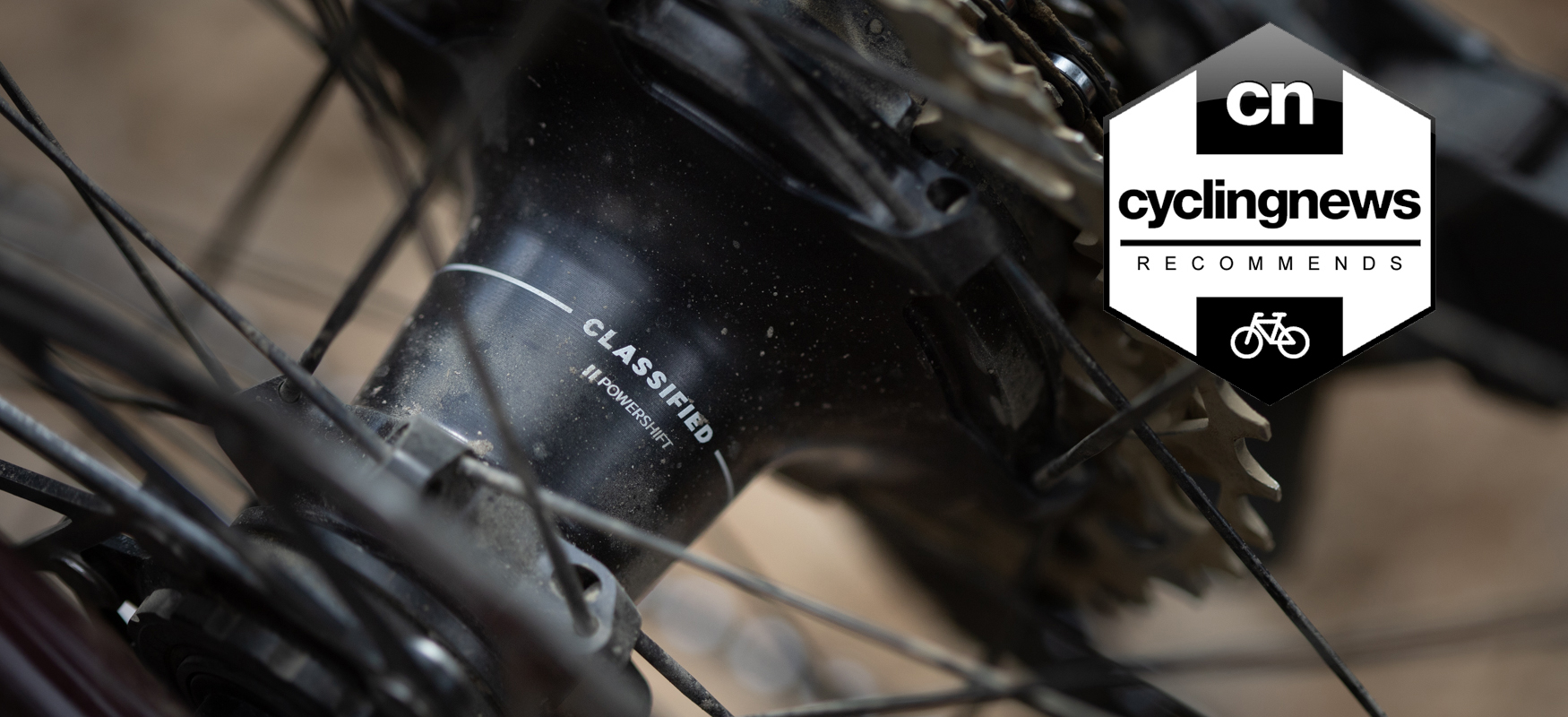Cyclingnews Verdict
The Classified Powershift technology is absolutely groundbreaking and has the potential to change cycling as a whole but it is begging for better wheel options and road frames designed around it
Pros
- +
All the power of 2x with the simplicity of 1x
- +
No need to turn the pedals when shifting
- +
Silent freehub
- +
Works with mechanical groupsets also
Cons
- -
Lacklustre wheel choices
- -
Lack of suitable road frames
- -
Expensive
You can trust Cyclingnews
When we talk about the best gravel wheelsets and the best road bike wheels, we discuss them in terms of their ability to transform a frame. A good wheelset is one of the best ways to transform a new bike and make it exactly what you want it to be. There are ultralight options and there are aero options, but what if there was something that doesn't just transform the handling of a bike but fundamentally changes the way you ride it?
Enter Classified, a company backed by Tom Boonen that makes wheels that change the way you ride a bike. The brand offers three wheelsets including the CF G30 that we had a chance to spend time with. It's the gravel option available from Classified but it's more than that. As you read through our experience with it, it's important to understand that the wheel itself isn't the important piece. Instead, it's a platform for a radically different shifting system and we are ready to bring you details about it. We had a chance to spend time riding known routes and also racing the 2022 Gorge Gravel Grinder to put the Classified CF G30 wheelset to the test. Keep reading to see our thoughts on what it's like to use this new technology.
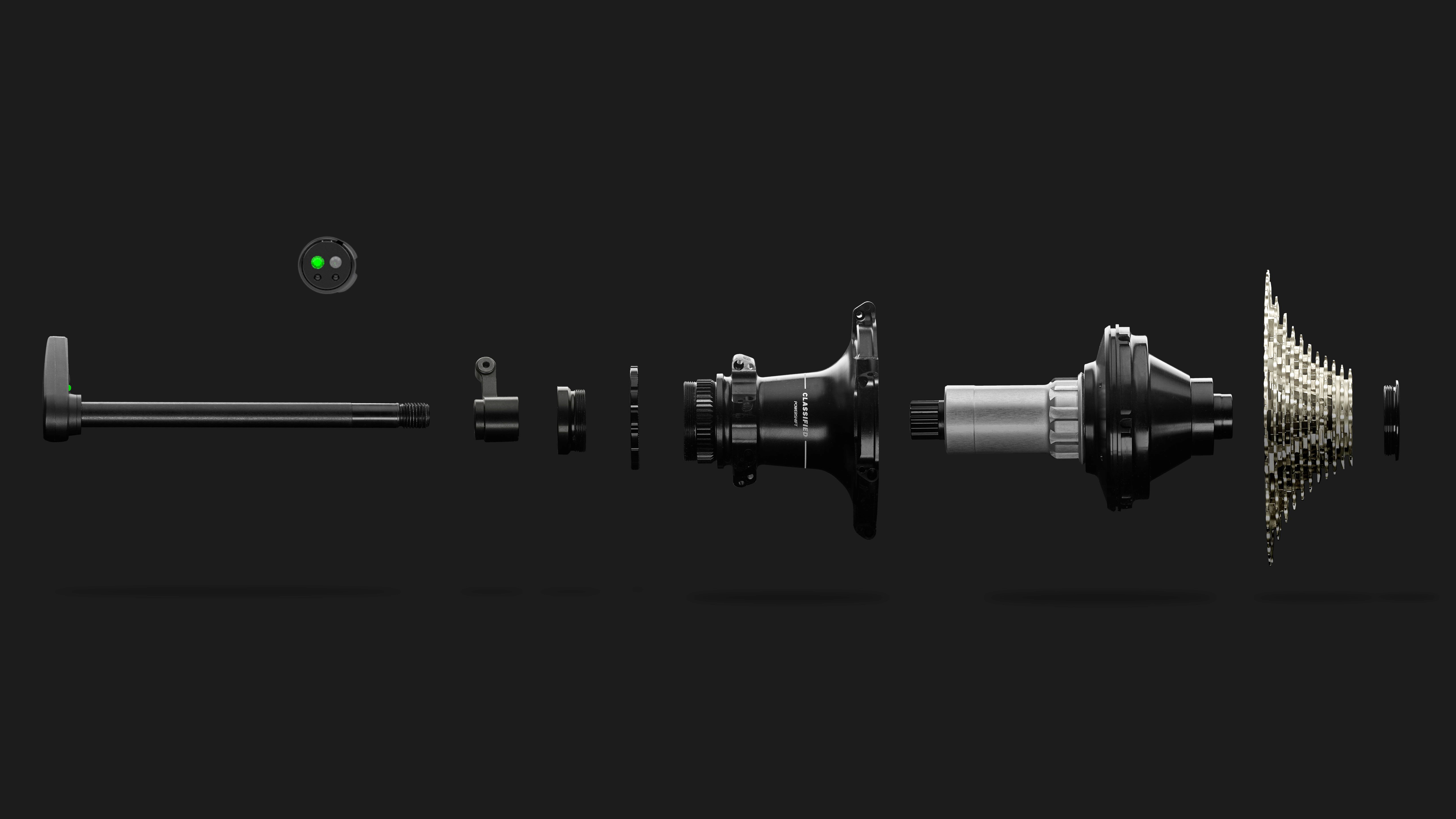
Design and aesthetics
There's a lot to unpack in this design section of the review. It's not just the design of wheels to explain but that's the easiest place to start. The CF G30 is a carbon rim gravel specific wheelset. The depth is 30mm and the internal width is 25mm while the external width is 29.5mm. Upfront the hub is a Hope RS4 or DT Swiss 240 DBCL Straightpull depending on availability. Spokes are DT Swiss Aerolite SP and the wheels are disc only with a centre lock design. The only thing of note is that the required lockring is a Fulcrum AFS standard or a standard bottom bracket lockring will also work.
What's different about these lockrings is the placement of the threads. Typical SRAM and Shimano lockrings drop into the centre of the hub and have threads that face out. These have threads facing in and they sit on the outside of the hub. For the front wheel this isn't necessary, or important, but as you move to the rear wheel this is where things get really interesting.

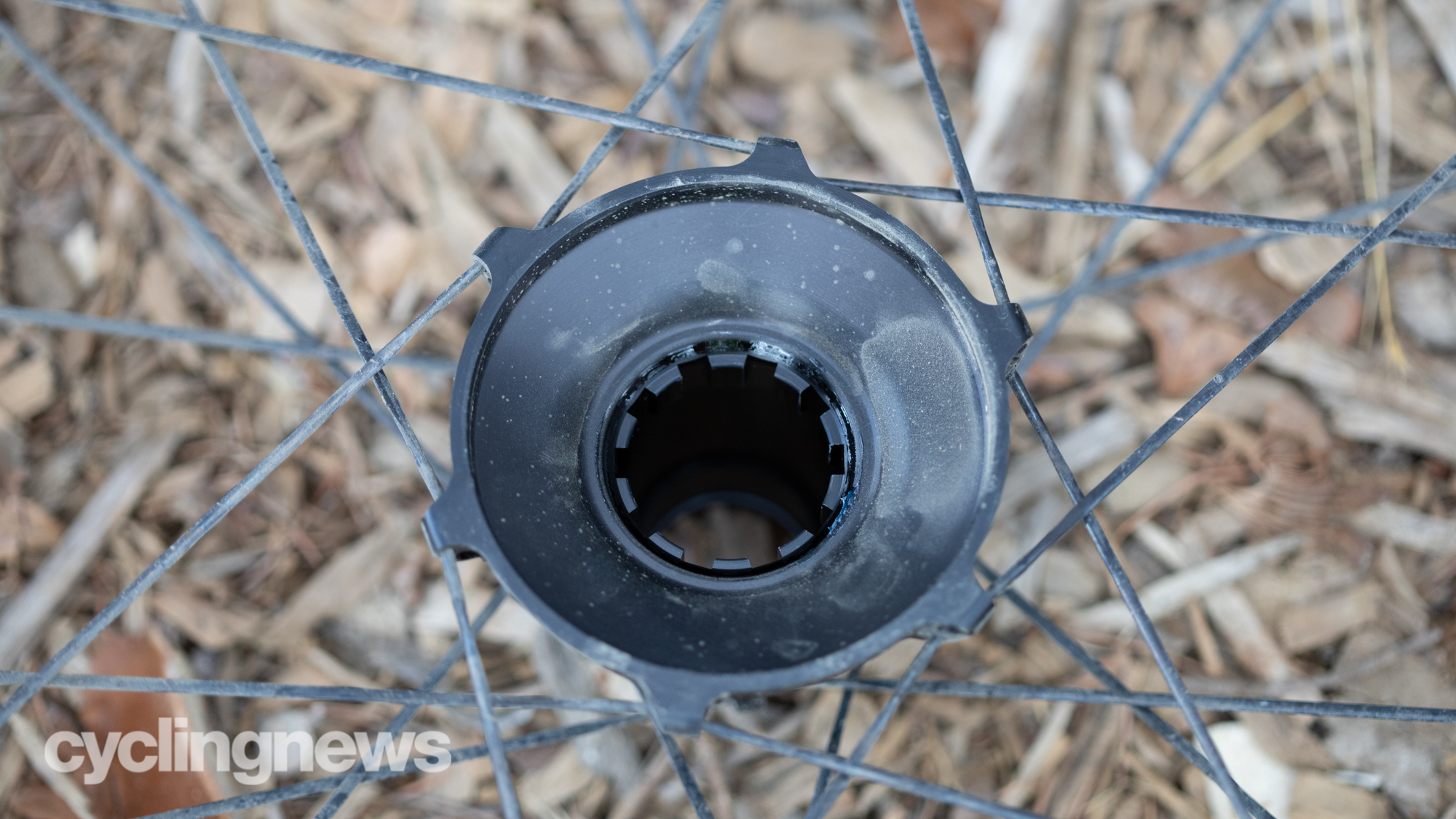
Instead of a typical rear hub, there's a hub shell. This is, as they say, where the magic happens. This is why the lockring has to thread external to the hub, the space inside the shell is being used. Inside of the hub shell sits a planetary gearbox with two gear ratios. The first gear ratio is 1:1 and when used in this way gearing on the rear cassette is exactly what you expect. There's another gear available though and that one is roughly a 30% reduction. The whole system only pairs with a 1x groupset and you can think of this new geared hub as a front derailleur.
There are some other unique pieces in the rear as well, a sort of supporting cast that makes it all work. First up is a Classified specific rear cassette. There are options for 11 or 12 speed Shimano and SRAM but they are largely the same other than the number of gears and range. The 12-speed options start with a 28-tooth option for the closest spacing while the eleven speed gets a 27-tooth. From there both offer 30, 32, and 34 with all eight cassettes having an 11-tooth small cog. Along with the 11-tooth small cog they all share the same one-piece steel construction. The need for these unique cassettes comes from the space required of the hub. The freehub is larger and cone-shaped so the cassettes have no central spider to allow space.
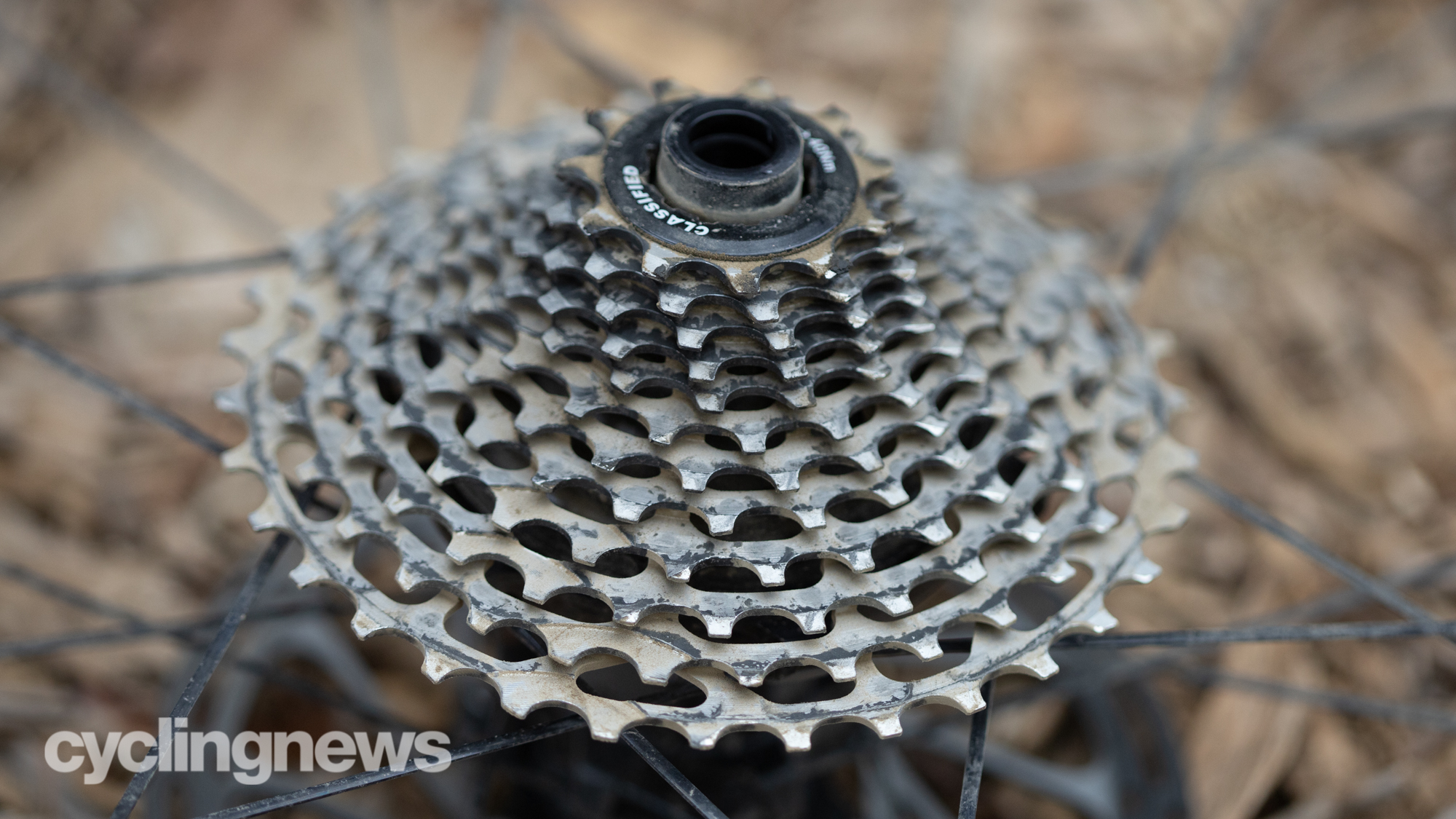
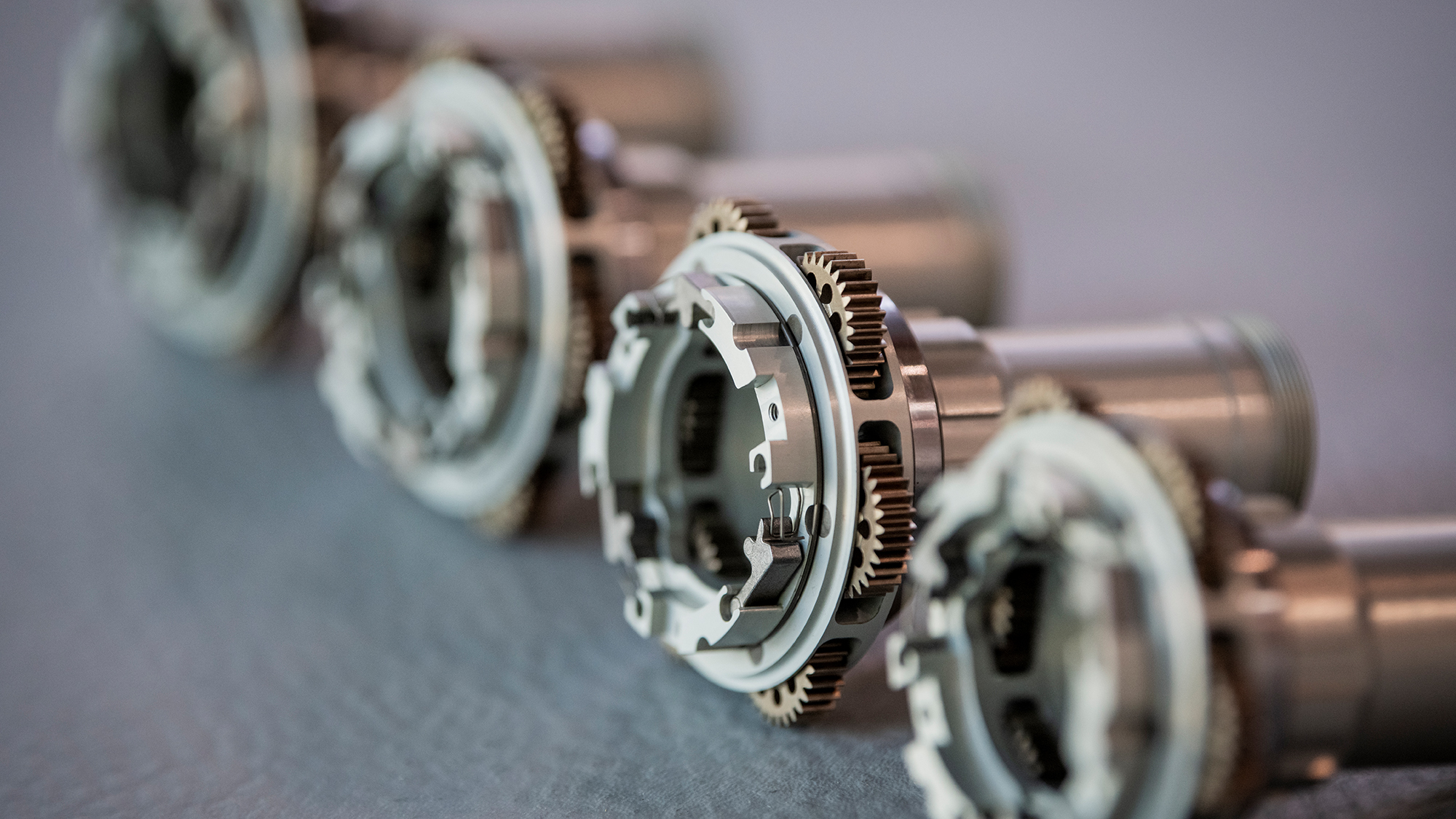

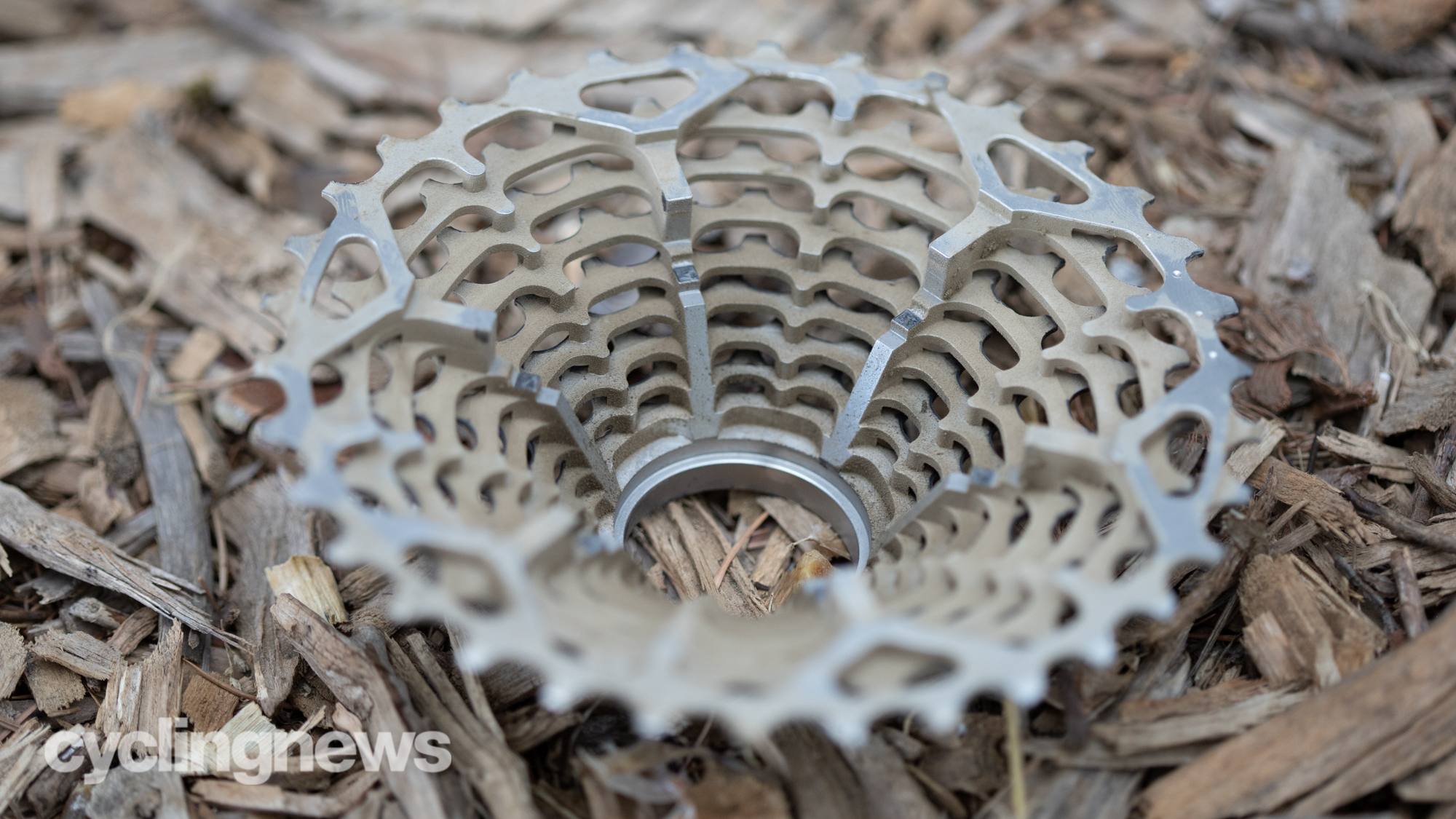
The next major piece of the design is the electronic thru-axle. With an aftermarket system, you'll receive a sprint shifter and bar end transmitter that communicate with the freehub to initiate shifting. Press the satellite shift button and the handlebar module sends a wireless (Bluetooth) signal to the thru-axle. The thru-axle receives the signal and triggers shifting inside the Classified hub. The hub itself uses a sealed design that requires no external maintenance or charging. The thru-axle has a rechargeable battery with an expected lifespan of roughly three months and the bar end transmitter uses a CR1632 button cell battery. The transmitter battery has an expected lifespan of a year and it's replaceable without re-wrapping the bar.
Answering some of the obvious questions, yes it is possible to pair this with a mechanical groupset. The Classified system is self-contained and separate from the rest of your shifting system. It's also technically possible to pair this with a 2x system but the smallest suggested front chainring is a 40-tooth. As you reduce the front chainring it increases torque on the rear and reduces performance, so while it's technically possible it doesn't have much real-world useability.
The other common question is about multiple wheelsets. You only need one Powershift Hub and swapping it doesn't take much, but it requires all of your rear wheel options to have the compatible hub shell. To do this, you'd remove the thru-axle, remove the lockring on the brake side, and unthread the hub with the cassette attached. You could then drop this complete unit into a different wheel with a Powershift Hub shell. It's about as difficult as it would be to swap wheels if you only had one cassette.
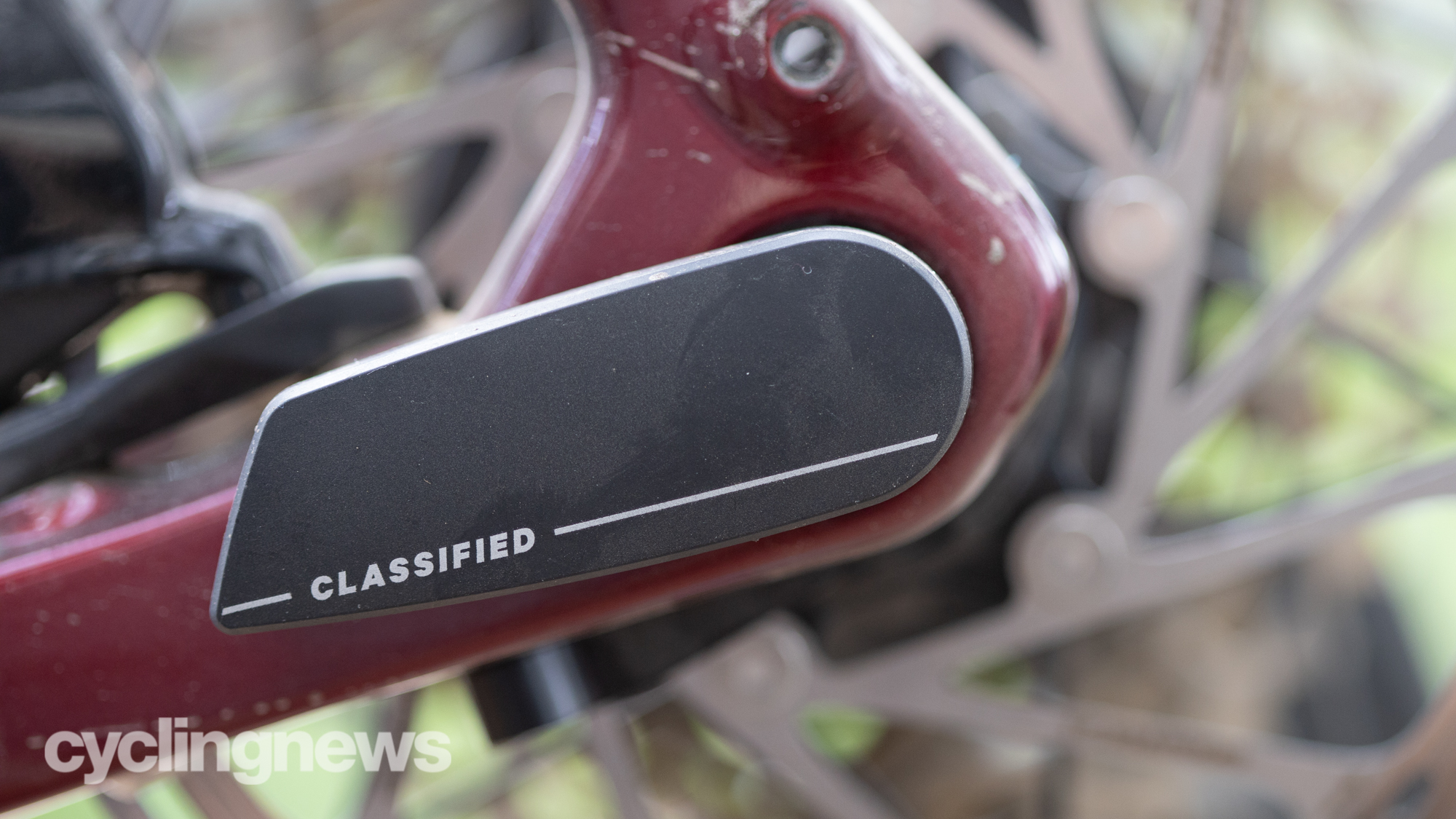
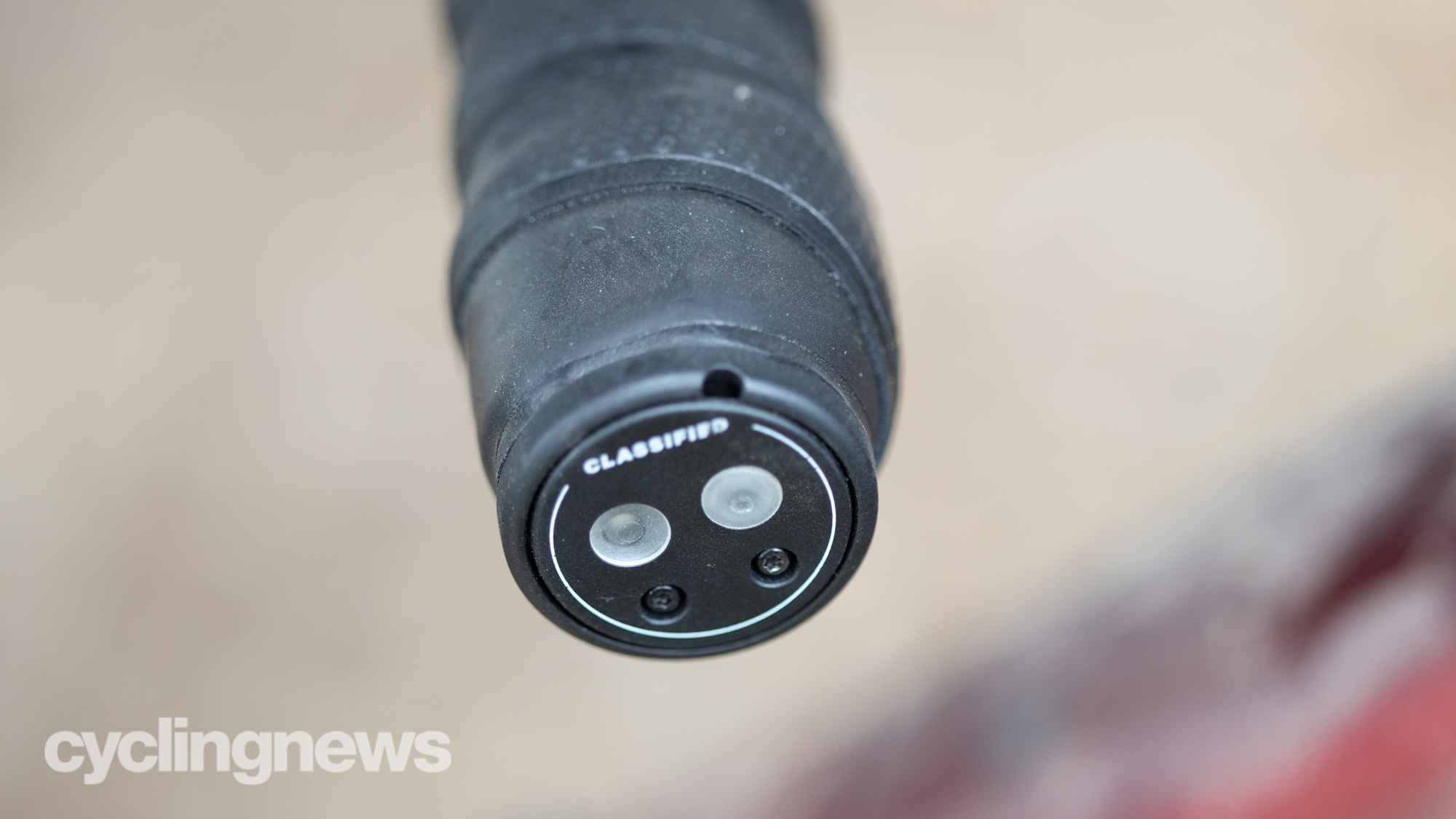
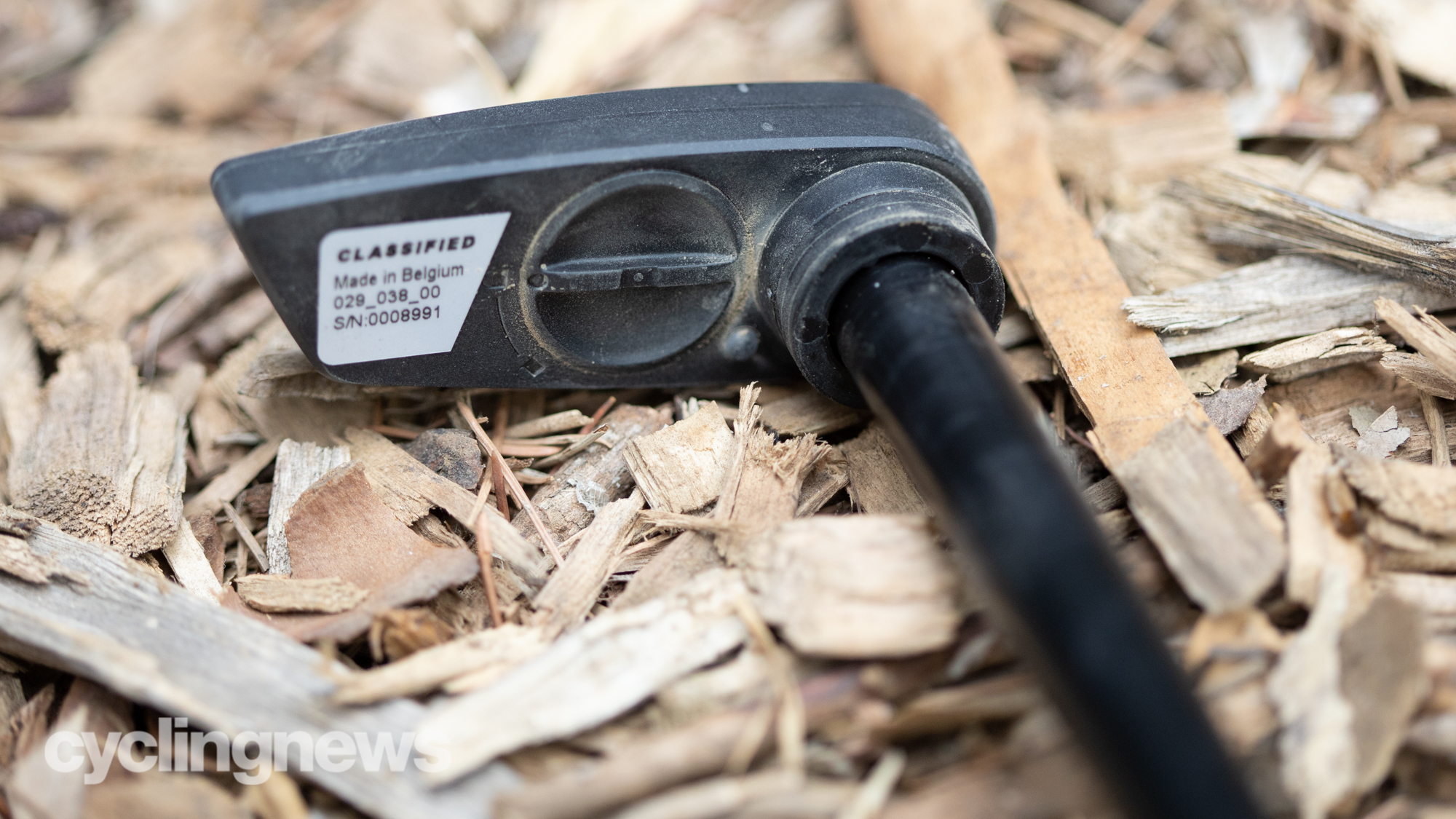
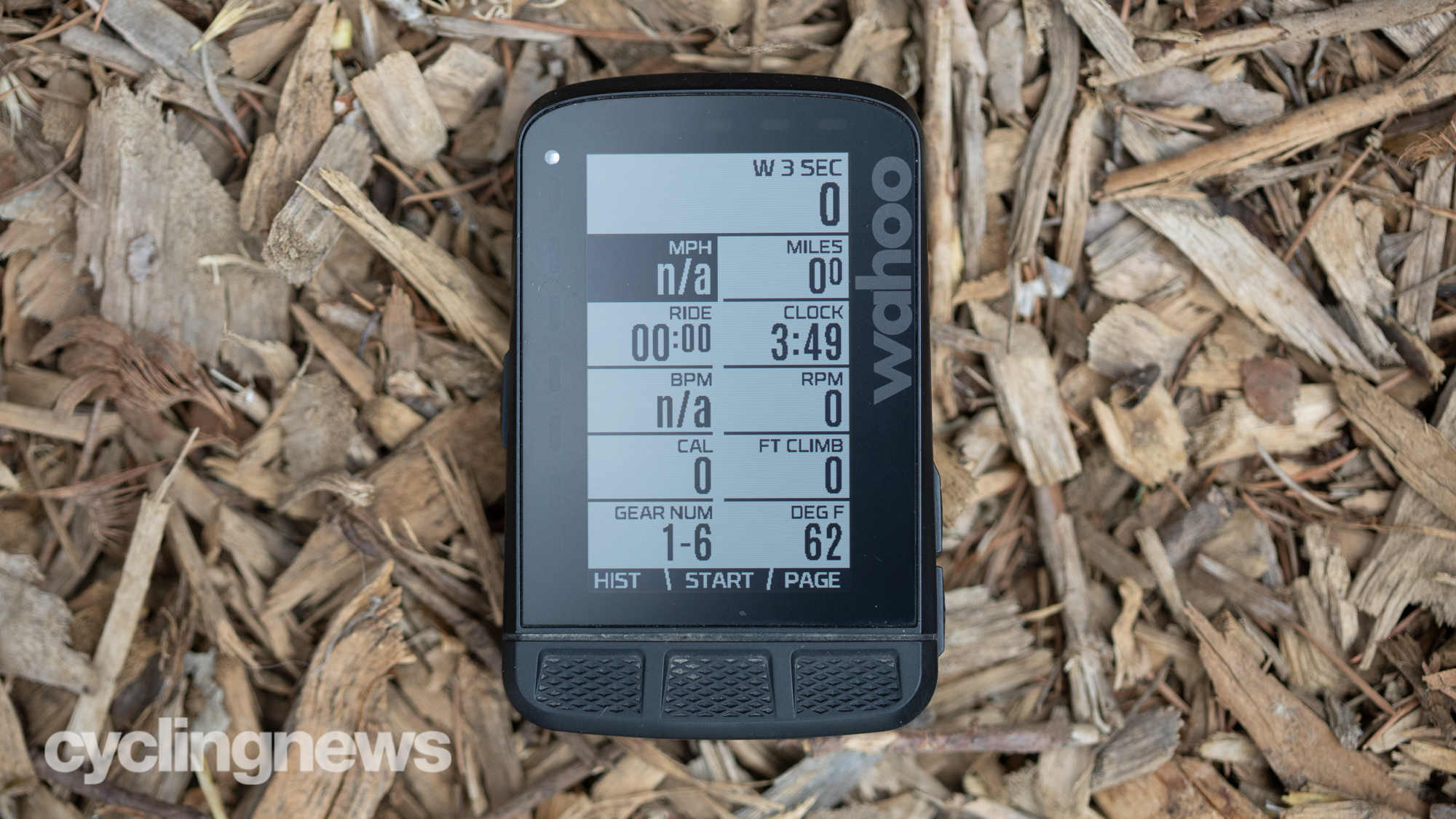
Installation
The first thing I had to contend with was the installation, although it's worth saying straight away that this isn't the user experience for the general public. Right now, the only way to get a Powershift wheelset is through a dealer network, and while you can purchase through the Classified website, it still gets installed by a dealer. The company wants to make sure that the experience is what it's meant to be and there are no mistakes. I opted to do my own install only because of time constraints in the review process. Despite this being unusual I think it's worth sharing the process.
Classified has a video covering how to install and a manual available. Using these resources, I spent about four hours total. If I did it again I could probably do it in an hour and if you don't include the time I spent wrapping the bars it would probably be closer to 30 minutes. I spent a lot of time measuring and double checking and it's actually much simpler than that. All you need is a rear hub width of 142mm, front hub width of 100mm, and 140mm or 160mm flat-mount disc brakes. On the drivetrain side, it needs 1x with 11- or 12-speed Shimano or SRAM and the correct maximum sprocket capacity for the rear derailleur. You can read that as most current gravel bikes on the market and a few road bikes.
I already knew the Trek Checkpoint SL6 eTap I'd be fitting it to was compatible so none of the measuring and double-checking was necessary. All I had to do was remove the old thru-axle and make sure the new one was the same length using the included adapters. With that handled the only things that take much time are getting the sprint shifter where you want it and positioning the handle of the thru-axle so it has the correct orientation.

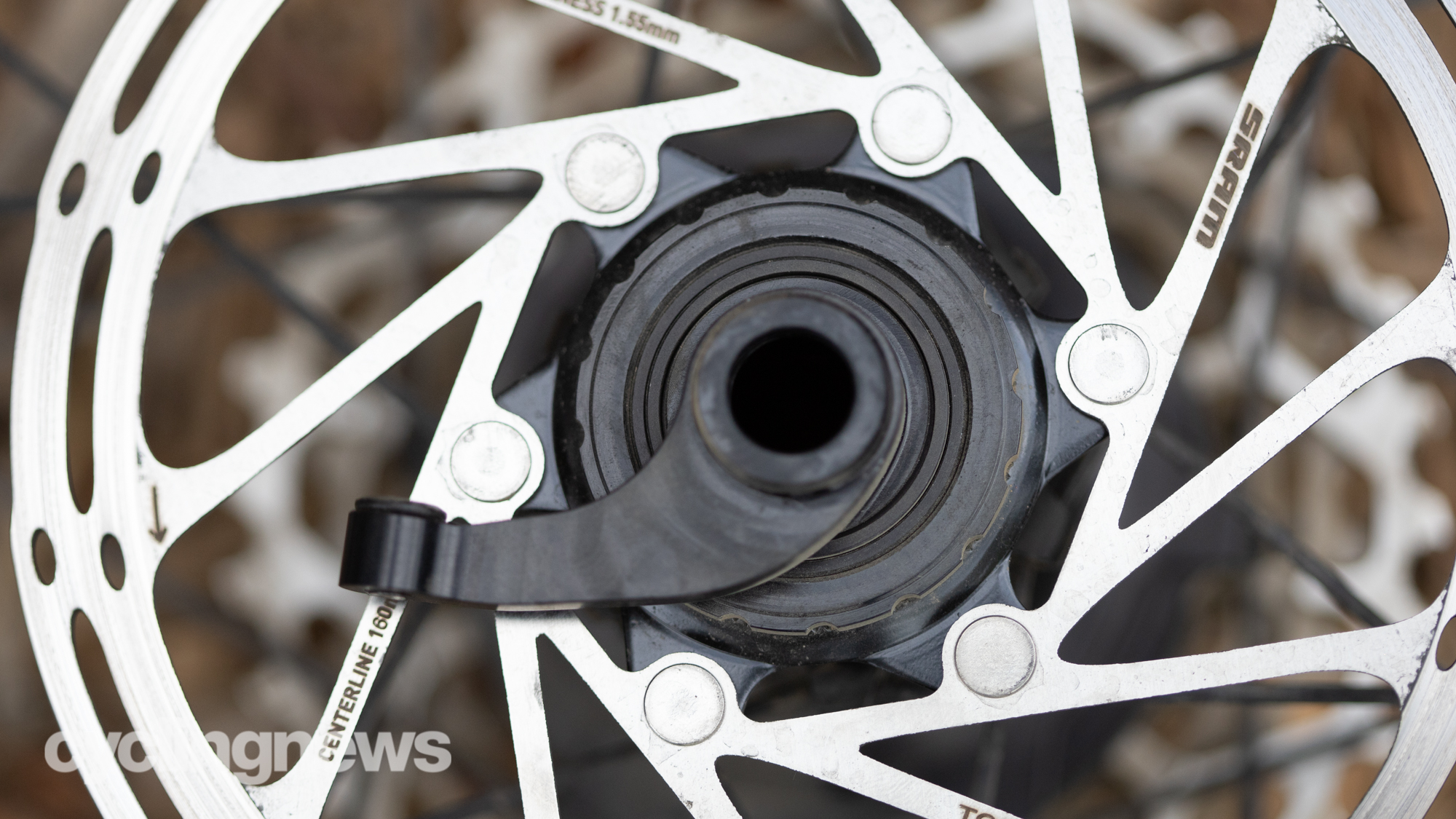
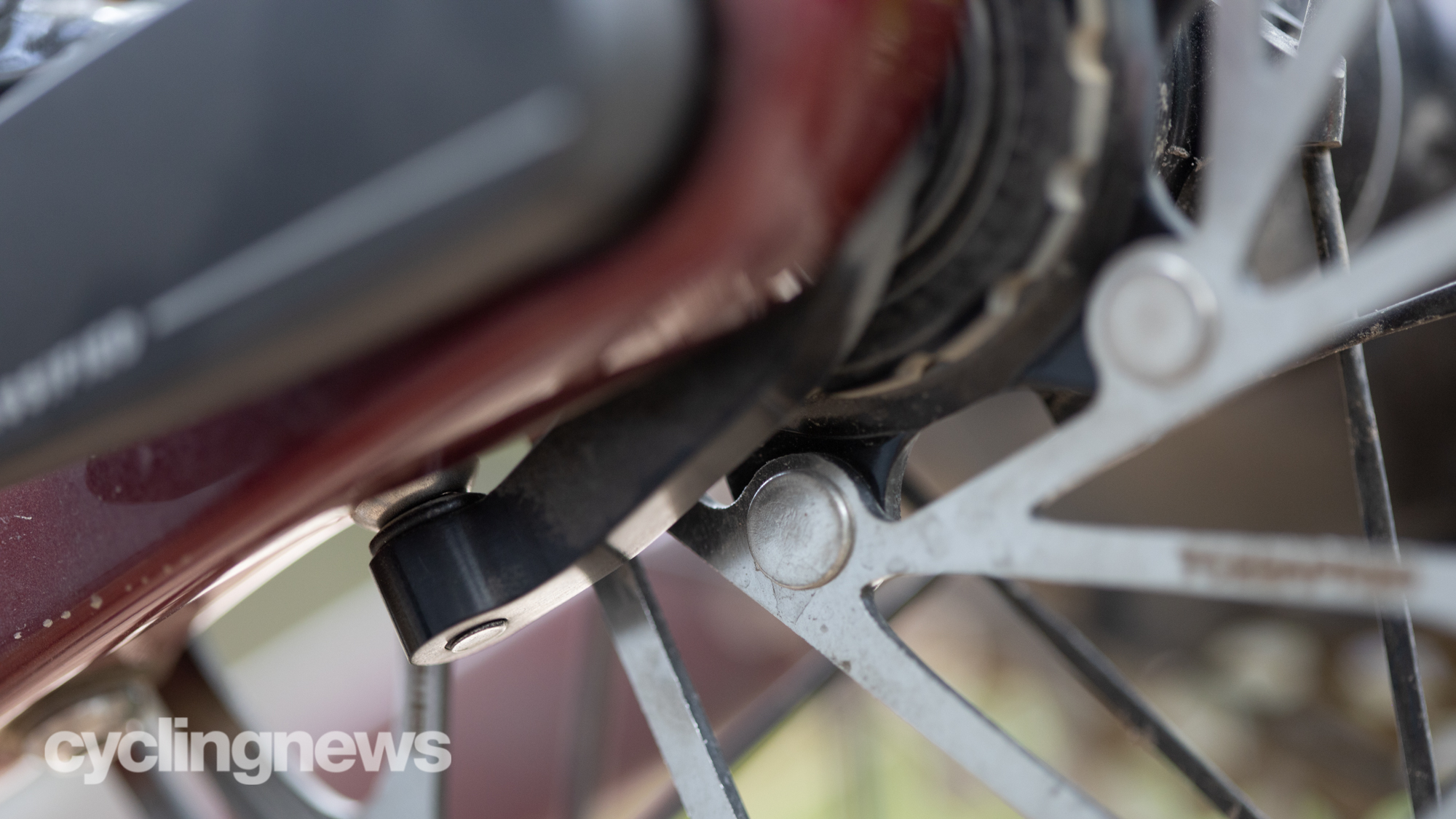
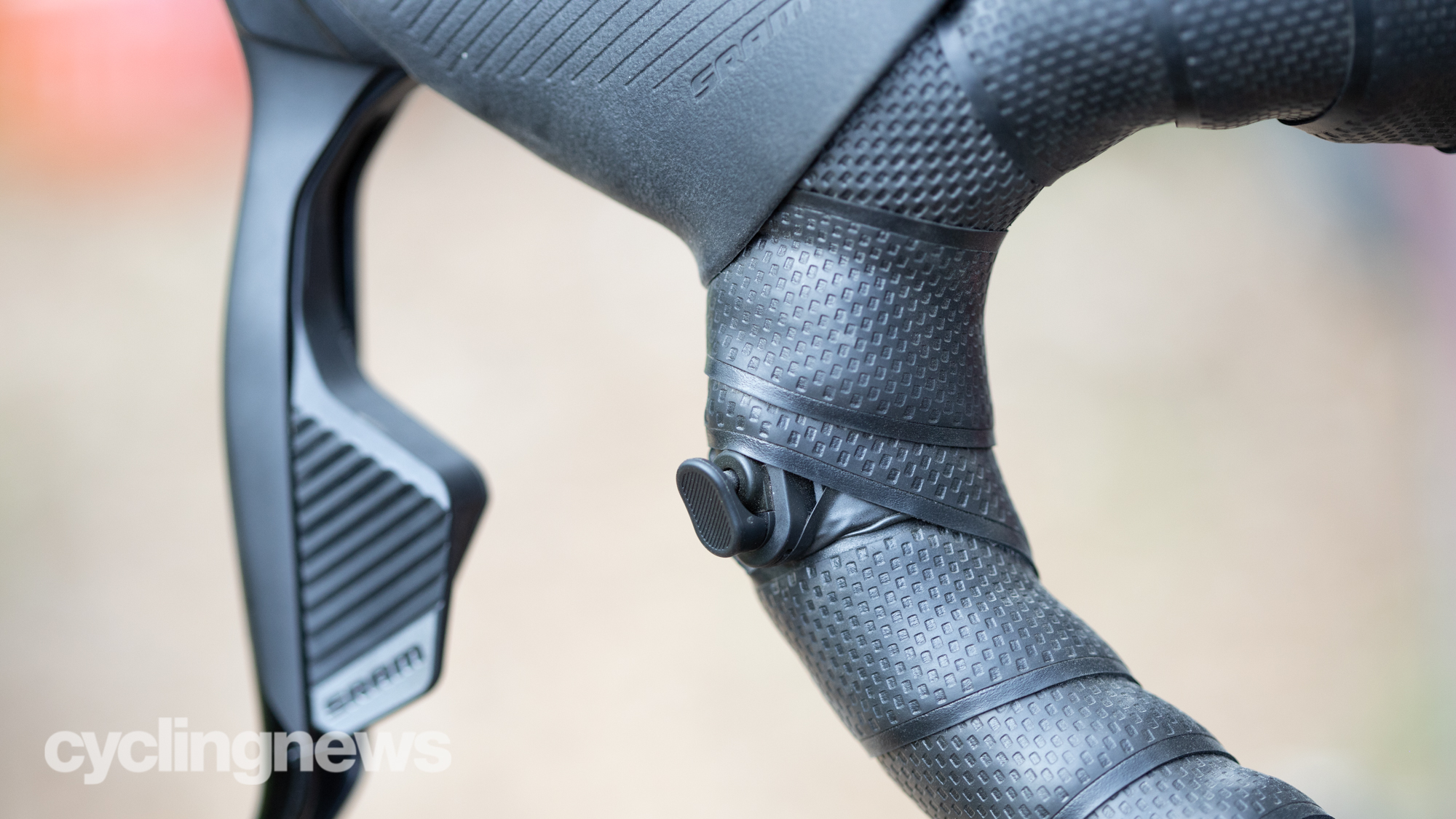
Performance
The whole first ride, almost every situation with the system, was completely dominated by the experience of riding with a silent hub. In many ways, this is a distraction from what the system offers, and it's not completely unique, but it was a foreign experience to me. Challenging around other people and a joy while alone, I never really got over this detail when riding the system. As far as actually using the system, it feels just like the SRAM system I integrated it with, except now there are 12 more gears that are 30 per cent easier. There’s no cross chaining so all 24 gears are usable but those details are minor. What's really groundbreaking is that you don't need to turn the pedals to shift and you can't drop a chain as you shift. The ability to shift under load (ie when pedalling hard or up a hill) is also somewhat interesting as well but it doesn’t change things in quite the way you might think.
When shifting under load, it's never an awesome experience. Take your pick of 1x groupsets and shifting the rear under load sounds crunchy but otherwise works. With Classified Powershift, it feels like you've released a tightly held spring. It works but it's still going to feel better if you don't shift under full load. Now when it comes to front shifting things are a little more mixed. I'm used to SRAM and as such, I shift my Shimano front chainrings while climbing at full power way more often than I'd like to admit. It works just fine even if it’s not ideal.
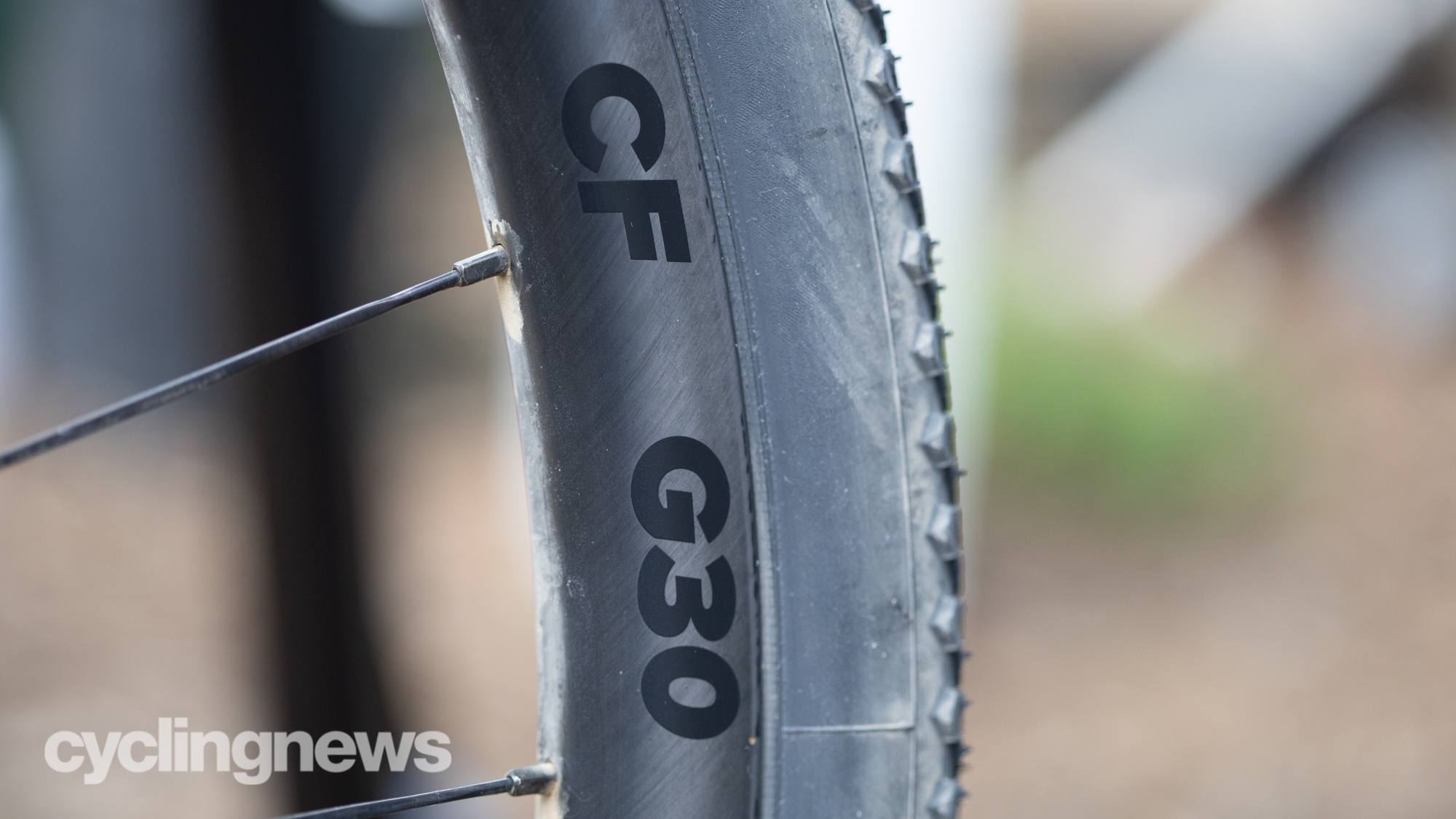
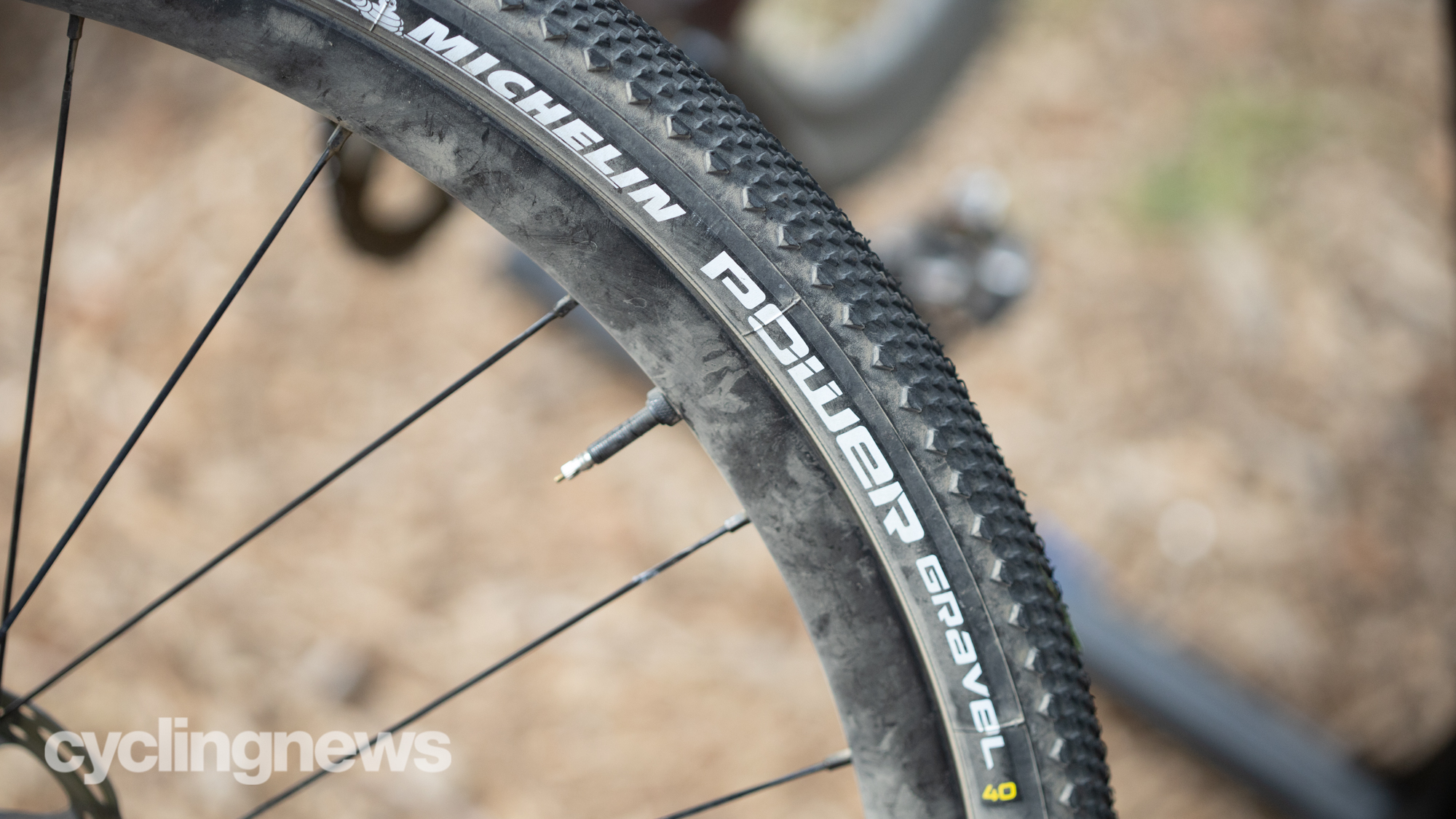
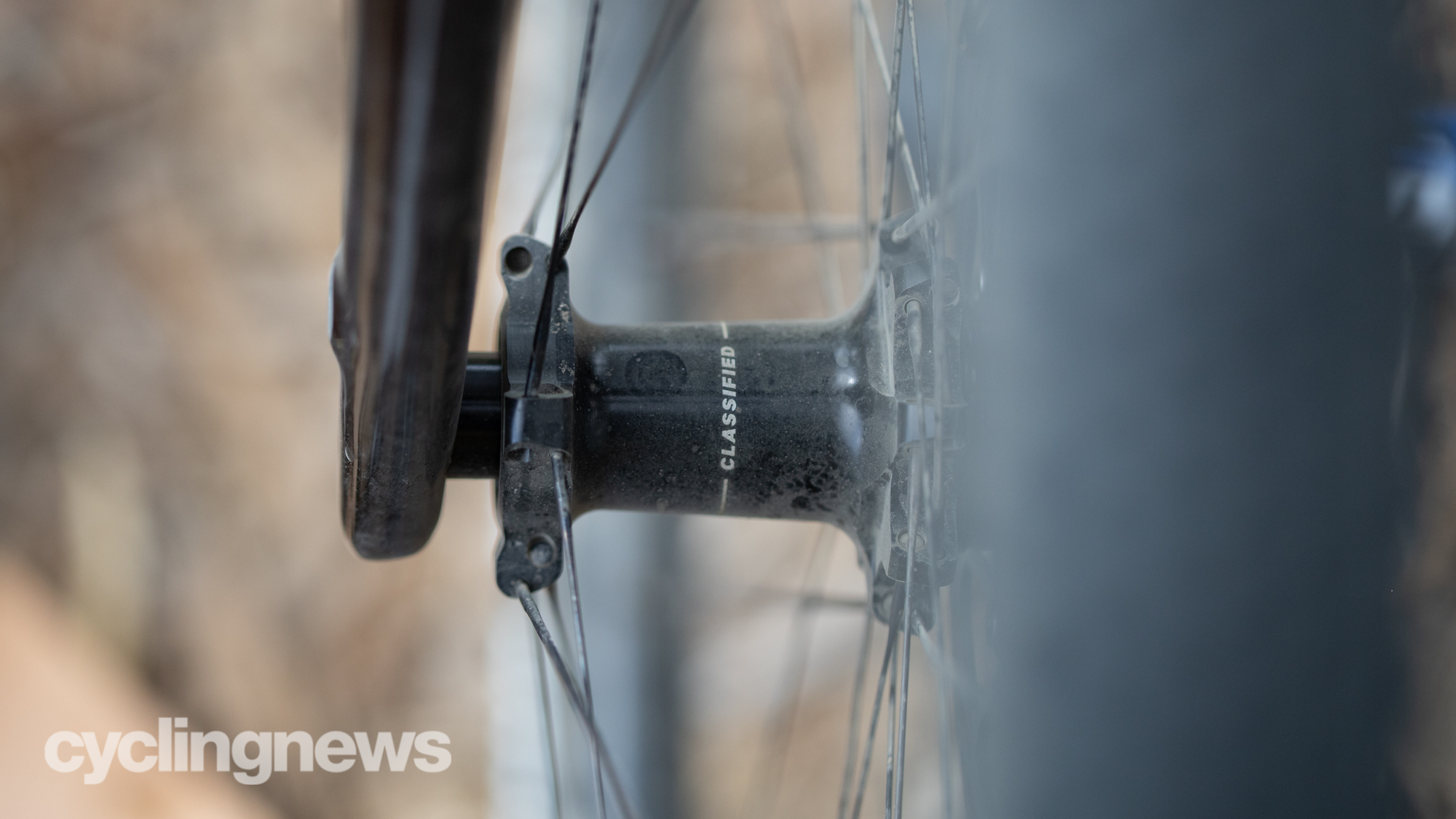
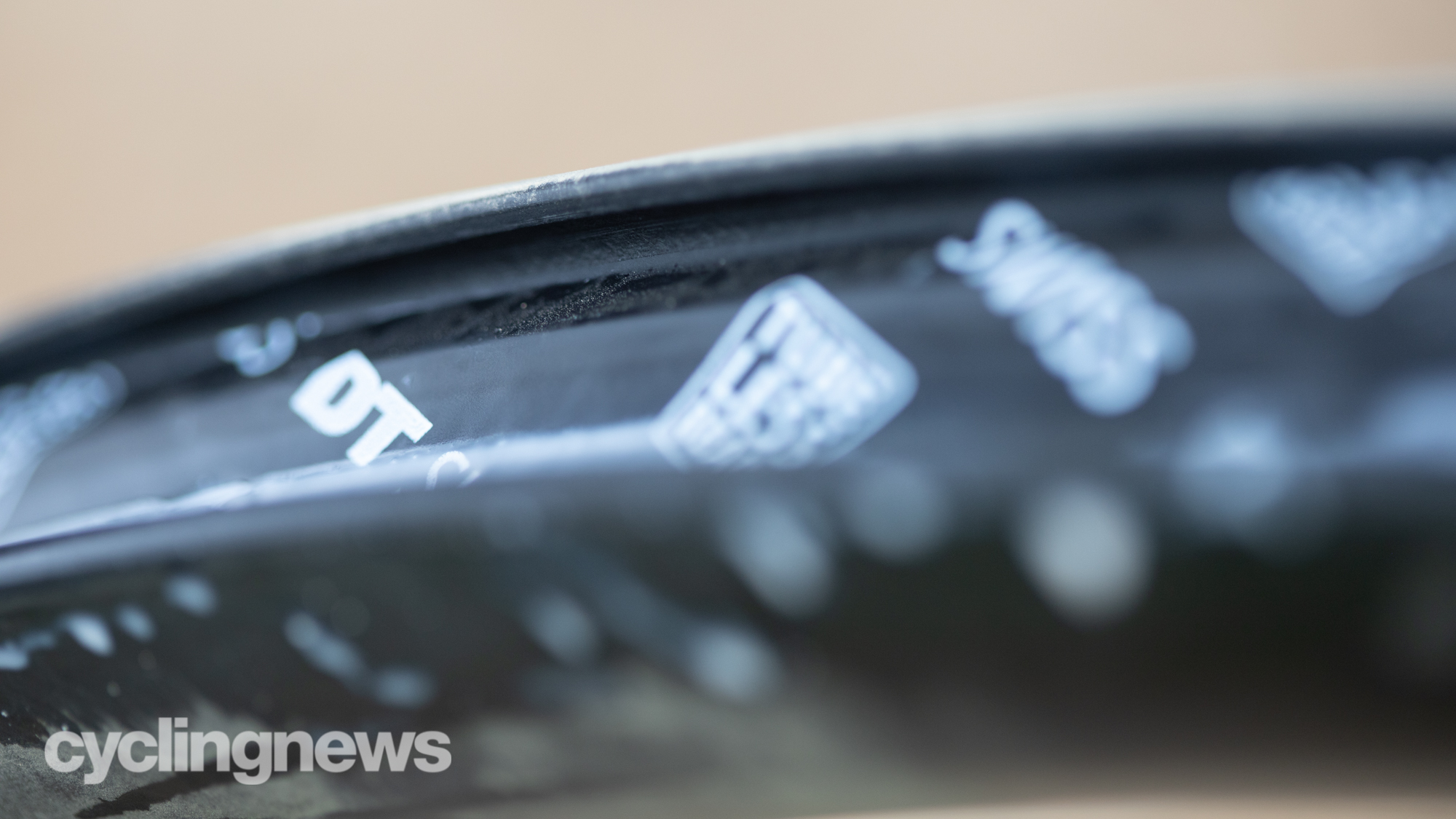
There's another scenario though where the Classified shifting system, and its ability to handle shifting under load, does make a big difference. When riding rolling hills, it's great to sprint down the hill and then ride the wave as the pitch increases. When your momentum slows your cadence will start to drop and it's ideal to change the front chainring while leaving the rear in the same place. This scenario is when I've dropped the chain in the past and as a consequence, I don't do it. With Classified Powershift, it's no problem to shift using what amounts to a virtual front chainring. This can change how you ride and it’s especially useful in a race situation.
The other bigger change to riding comes from the fact that you don’t need to turn the wheel to change gears. During the race testing I was doing I got a cramp on a steep hill and stopped. When it was time to start again, I pressed the sprint shifter and I was now in an easier gear - no lifting the rear wheel to spin the cranks required. When riding on my own, I sometimes stop on hills for pictures. Now it’s no problem to get started again even if I forget to plan for it.
It’s these little differences that make the Classified system special. Much of what we do on bikes stems from accommodating the need to change gears in certain ways. Classified throws that all out the window. You can always go up or down by 30-per cent no matter what gear you are currently in or what's happening in the ride. Next time you ride, think about how that might change your approach. Maybe as you get close to a hill you could hold full power longer before almost instantly changing your front chainring. Or, if you’ve ever descended before turning a blind corner and finding a steep climb, the challenge of quickly getting in the right gear is gone.
You'll notice I haven't mentioned the actual wheels much. That's because they aren't special. The road wheels have narrow internal width and the gravel wheels, which I tested, are completely fine but not special. In a world where options like the incredibly light Cadex AR35 or the aero optimised Hunt Limitless 42 exist, these wheels are unremarkable. Ride with them and they work without calling attention to themselves but the investment in the system is high and there are more interesting wheels.
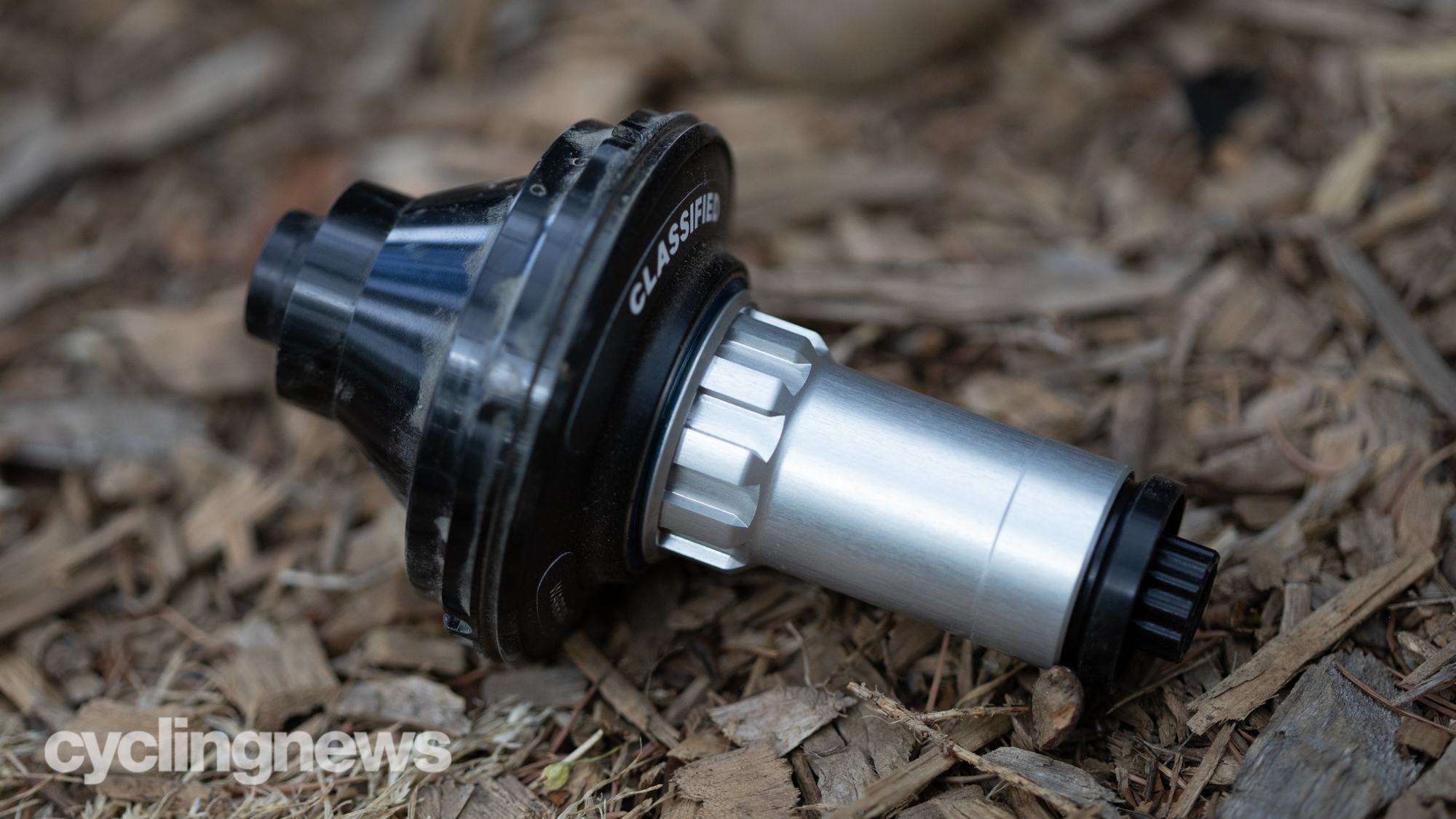
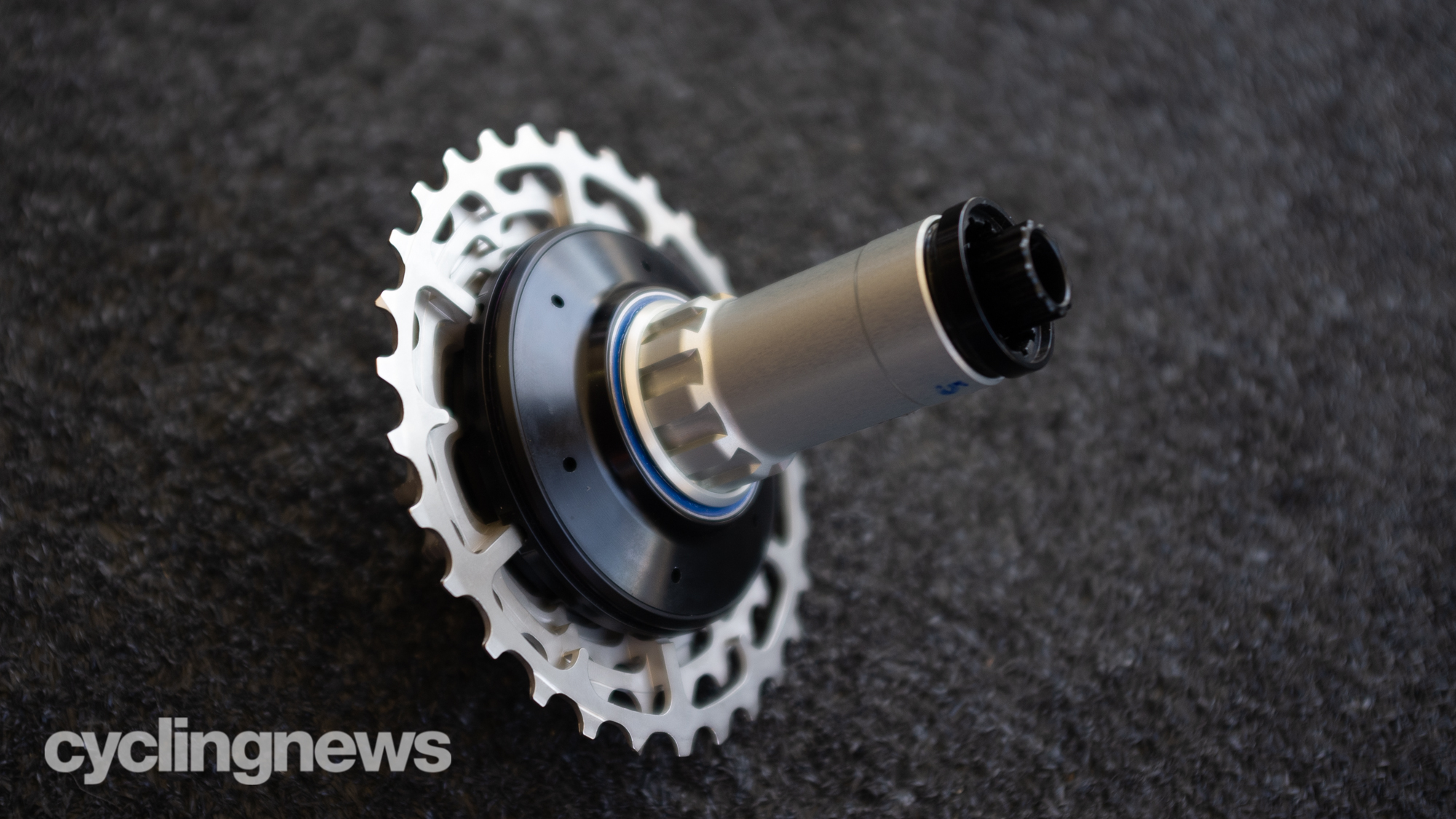
Verdict
This is already a long review and I could rave for a lot more words about how groundbreaking the Classified Powershift system is. The way it changes shifting, giving all the advantages of 2x without a front derailleur, makes it akin to suddenly changing the constant of gravity then seeing how evolution responds. Which is where it feels like it is right now, it's waiting for evolution to catch up.
On the gravel side, there are frame options available that make a lot of sense. The industry is splitting into 2x gravel race bikes and 1x gravel adventure bikes and the Classified Powershift system is better in both situations. It's even great if you want to have only one gravel bike that you use for everything. All this side needs is more wheel options.
On the road side is where there needs to be more advancement. 1x isn't a well-established trend in road bikes. Classified claims better efficiency in the drivetrain and aero gains with the use of their system and they aren't alone in that. 3T in particular has been vocal about the aero possibilities of 1x on the road. Right now though, there are only the 3T Strada Uno and the Vielo V+1 as 1x specific road bikes.
Classified could be the basis for a bike that was really groundbreaking if they had the right partner. A frame and wheels built from the start with the system in mind would be a paradigm shift. As it is now, if you've got the money to invest in a small company you won't be disappointed with what you get. There are also a handful of bikes available with the system and even if they aren't specifically built around it they are excellent choices.
Tech specs: Classified Powershift CF G30 Wheelsystem
- Price: Cassette: €199 / $249, Powershift ready wheels: €1399 / $1849, Complete system: €2599 / $2999
- Weight: 1,375g (Including front hub, excluding Powershift rear hub)
- Powershift Hub Weight: 476g
- Rim Height: 30mm
- Rim Outer Width: 29.5mm
- Rim Inner Width: 25mm
- Available Cassette Options: 11 speed (11-27 157g, 11-30 178g, 11-32 200g, 11-34 205g), 12 speed (11-28 186g, 11-30 190g, 11-32 202g, 11-34 230g)
Josh hails from the Pacific Northwest of the United States but would prefer riding through the desert than the rain. He will happily talk for hours about the minutiae of cycling tech but also has an understanding that most people just want things to work. He is a road cyclist at heart and doesn't care much if those roads are paved, dirt, or digital. Although he rarely races, if you ask him to ride from sunrise to sunset the answer will be yes. Height: 5'9" Weight: 140 lb. Rides: Salsa Warbird, Cannondale CAAD9, Enve Melee, Look 795 Blade RS, Priority Continuum Onyx
